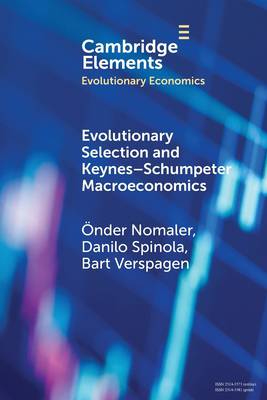
- Afhalen na 1 uur in een winkel met voorraad
- Gratis thuislevering in België vanaf € 30
- Ruim aanbod met 7 miljoen producten
- Afhalen na 1 uur in een winkel met voorraad
- Gratis thuislevering in België vanaf € 30
- Ruim aanbod met 7 miljoen producten
Zoeken
Evolutionary Selection and Keynes-Schumpeter Macroeconomics
Önder Nomaler, Danilo Spinola, Bart Verspagen
€ 33,45
+ 66 punten
Uitvoering
Omschrijving
This Element develops a stock-flow consistent agent-based macroeconomic model with Schumpeterian and Keynesian characteristics. On the Schumpeterian side, technological change is modelled as productivity growth as a result of research and development (R&D). The R&D strategies of firms are determined by an evolutionary selection process. On the Keynesian side, demand is endogenous on current income and the stock of households' financial wealth. In the long run, an evolutionary stable R&D strategy of firms emerges, leading to endogenous productivity growth. Demand adjusts endogenously to match labour-saving productivity growth, so that the employment rate is stationary, although with business cycle fluctuations. The authors use Monte Carlo simulations to analyze the emergence of an evolutionary stable R&D strategy, as well as the long-run properties of the model and the nature of business cycles. This title is also available as Open Access on Cambridge Core.
Specificaties
Betrokkenen
- Auteur(s):
- Uitgeverij:
Inhoud
- Aantal bladzijden:
- 96
- Taal:
- Engels
- Reeks:
Eigenschappen
- Productcode (EAN):
- 9781009619523
- Verschijningsdatum:
- 16/10/2025
- Uitvoering:
- Paperback
- Formaat:
- Trade paperback (VS)
- Afmetingen:
- 152 mm x 229 mm
- Gewicht:
- 140 g

Alleen bij Standaard Boekhandel
+ 66 punten op je klantenkaart van Standaard Boekhandel
Beoordelingen
We publiceren alleen reviews die voldoen aan de voorwaarden voor reviews. Bekijk onze voorwaarden voor reviews.








